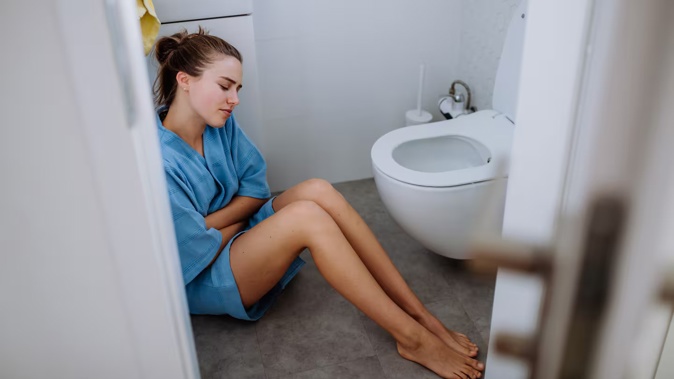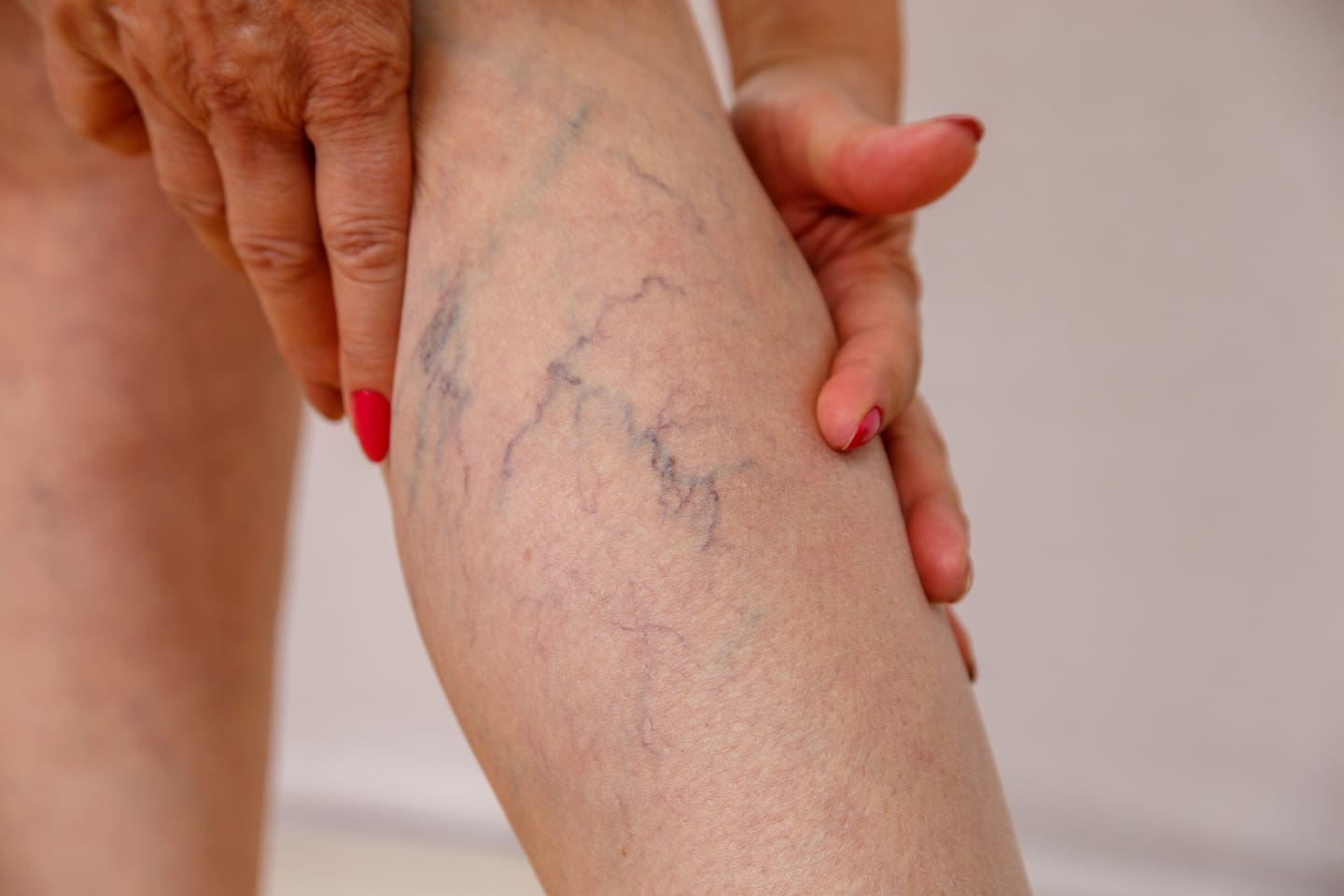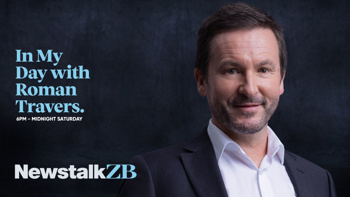
How can I stop varicose veins from getting worse? Do compression socks actually work?
Varicose veins are engorged, serpentine veins that look like knots and appear most often in our legs. Sitting and standing for long periods of time can increase your risk.
But there’s another suspected cause of varicose veins that may surprise you: trouble pooping.
The reason is that when we strain to have a bowel movement, that elevation in our intra-abdominal pressure gets transmitted downward to the veins of our lower extremities. This kind of pressure can damage valves in our veins, which would normally help shunt blood upward to the heart. As the whole system gets backed up, pressure and inflammation build, and superficial veins start to dilate and twist into knots. The result is varicose veins.
As a gastroenterologist, it comes as no surprise to me that haemorrhoids and varicose veins go hand-in-hand. Both are more common in areas where a low-fibre, Westernised diet is prevalent, and a 2021 case-control study of 300 adults noted people who rarely ate fibre-rich foods had more than quadruple the risk of varicose veins. And just like with haemorrhoids, researchers suspect the reason is likely less to do with bowel movement frequency, and more with how much a person strains while pooping.
What doctors like me also want is for you to walk around and move. This can limit the pressure that builds up in your legs: pumping your calf muscles helps push blood back to the heart and can reduce blood from pooling in the legs. Trapped in long Zoom meetings all day? Flex your toes or try rocking your feet back and forth, which engages the calf muscles. No one will be the wiser.

Medical-grade compression stockings are typically recommended as the first line of treatment for varicose veins. Photo / 123RF
Do compression socks actually work?
Once a physician confirms a diagnosis of varicose veins, medical-grade compression stockings are typically recommended as the first line of treatment.
Studies have found that when used correctly, compression stockings do help with symptoms such as pain, swelling and sleep problems, but the reality is people tend to hate wearing them - the tightness can make the legs feel sore and hot, and getting them on is a pain.
Compression socks are not for everybody, Eri Fukaya, a clinical associate professor of surgery at Stanford Medicine who leads the Stanford Vascular and Vein Clinic, said in an email. “That said, there are many compression sock brands (some will fit better than others depending on materials and sizes), and compression alternative devices that may help.”
She recommends trying out a few options before dismissing them entirely.
The other issue is that compression stockings are not changing the underlying problem: They’re only effective while the stockings are being worn, and randomised controlled trials have found more invasive therapies can be better for long-term relief and quality of life.
Which treatment is best for varicose veins?
Procedures such as endovenous ablation or laser therapy have lifetime recurrence rates as low as 10% - and modern techniques rarely necessitate staying overnight in the hospital or open surgery (hooray!).
Until about two decades ago, the mainstay of treatment was a surgical treatment called vein stripping done under general anesthesia. Today, minimally invasive techniques use lasers or chemicals to close off bothersome superficial veins, causing them to shrivel and disappear while the blood flow becomes redirected back into the deeper system. In some cases, another therapy called phlebectomy may be offered in which your doctor makes micro-incisions in the skin and uses a small hook to pull out the varicose vein entirely.
People can be back to work in a few days after these treatments. The right procedure for you will likely depend on your medical history and a conversation with a vascular surgeon, or similar specialist, who can review the pros and cons.
Getting insurance to cover them for medical purposes often involves demonstrating you’ve failed conservative treatments such as weight loss, exercise and compression stockings. They also may not be covered by insurance if you don’t have symptoms.
Some people with varicose veins are asymptomatic, but others experience aching, itching, and pain - and in those cases, treatment may be more medically indicated, Fukaya said.
Increased pressure in the veins of our legs can also cause skin changes in up to 7% of people with varicose veins, ranging from leg ulcers to a dark, reddening of the skin from broken-down red blood cells. Leg wounds often take longer to heal, and varicose veins also predispose people to blood clots.

Varicose veins are more common among women and older or obese adults. Photo / 123RF
Who has a higher risk for varicose veins?
It’s not clear who gets varicose veins and why, but they’re more common among women, at least in the United States, and among older or obese adults. Almost three in four women experience varicose veins during pregnancy. While most cases resolve after delivery, pregnancy remains a big risk factor for developing varicose veins later in life.
“Varicose veins can often run in families, but there is no ‘one single gene’ responsible,” Fukaya said. “If you see that it runs in your family, there is not a way to prevent it completely, but it helps to be mindful to limit pressure build up in your legs as much as possible.”
What I want my patients to know
Spider or reticular veins, which are smaller engorged veins, are not always from increased venous pressure. Although treatment for these veins is often cosmetic and can require paying out of pocket, I don’t dismiss how impactful these and larger varicose veins can be on people’s daily lives. Many of my patients who have undergone procedures have shared with me how these issues had made them feel self-conscious to show their legs and ankles. Talk to your physician about the ways these issues affect your wellbeing and explore treatment options together.
DIETS/HEALTH CHANGES
• - Consult a GP or other qualified healthcare provider before starting any diet or making any health changes suggested in this article. Individual needs for nutrition and exercise may vary. Always seek the advice of your GP or other qualified health provider with any questions you may have.
• - Healthline provides a 24 hours a day, 7 days a week over-the-phone health service at 0800 611 116 you can call for free health advice, information and treatment from professional healthcare providers.
Take your Radio, Podcasts and Music with you









